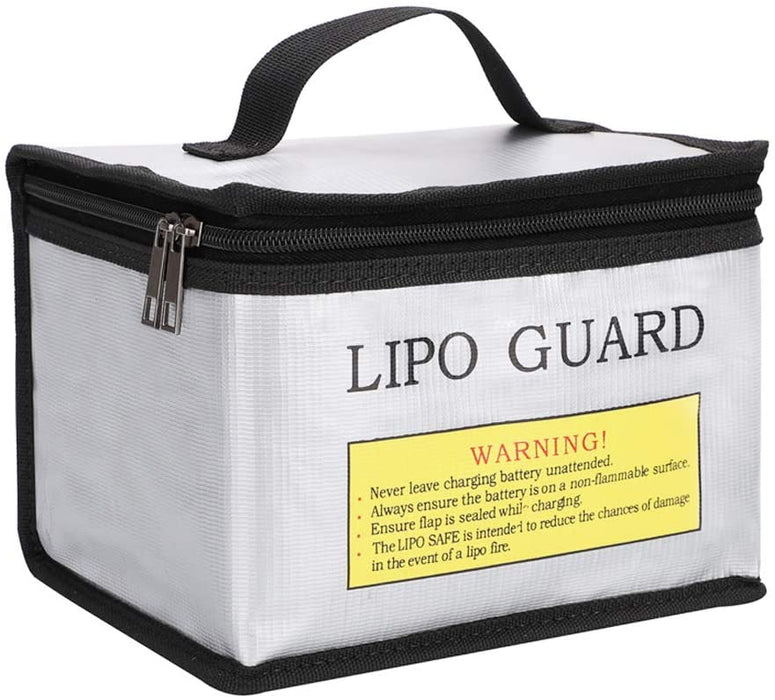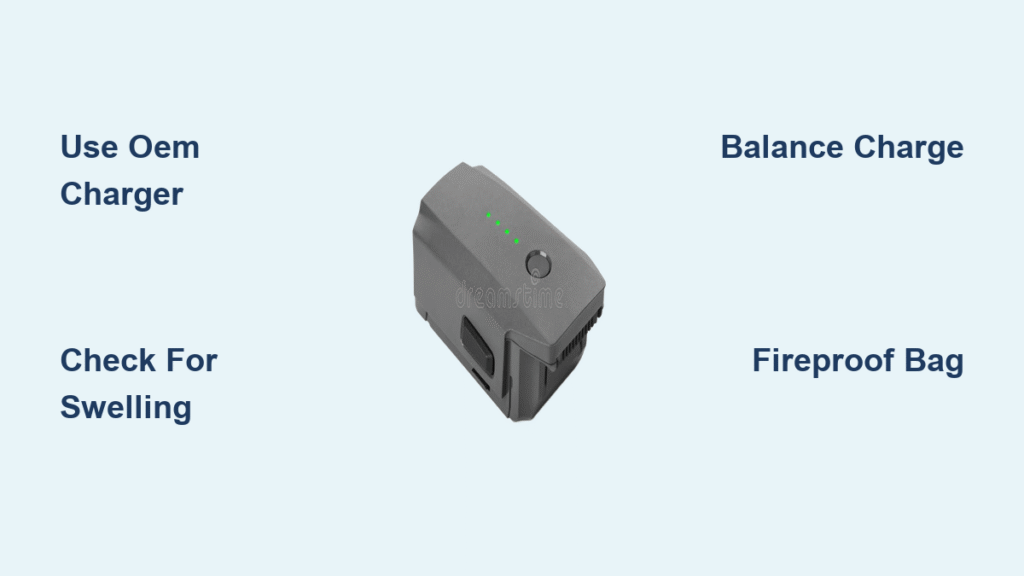Your drone battery dies mid-flight, plummeting your $1,200 investment toward the ground. You scramble for a spare battery only to find it won’t charge—now you’re grounded with expensive equipment gathering dust. Charging drone batteries properly isn’t optional; one mistake can trigger thermal runaway fires reaching 1,000°F in seconds. Whether you’re capturing wedding footage or inspecting rooftops, mastering safe charging procedures protects your investment and your home. This guide delivers precise, actionable steps to keep your drone batteries performing at their peak while avoiding dangerous situations.
Essential Charging Equipment You Can’t Skip

OEM vs Aftermarket Chargers: Why Compatibility Matters
Your drone’s manufacturer included a charger specifically calibrated for your battery’s chemistry and cell configuration. Generic chargers might seem cost-effective but lack the precise balancing circuits required for lithium-polymer (LiPo) batteries. When charging drone batteries, mismatched voltage settings—even by 0.1V—can permanently damage cells. Stick with OEM equipment unless you’re upgrading to professional-grade balance chargers with programmable settings for your exact battery specifications (2S, 3S, or 4S configurations).
Critical Safety Gear for Every Charging Session
Fireproof charging bag: These $15 LiPo-safe containers contain thermal runaway events. Never charge without one—place your battery inside before connecting to power.
Digital multimeter: Verify individual cell voltages before each charge cycle. Healthy LiPo cells read between 3.7-3.85V; anything below 3.0V indicates damage.
Smoke detector: Install directly above your charging station. LiPo fires produce toxic fumes long before visible flames appear.
Pre-Charging Safety Inspection Protocol

Physical Damage Detection Steps
Before connecting your drone battery to any charger, perform this 30-second inspection:
- Check for swelling—any puffing means immediate disposal
- Examine connectors for corrosion or bent pins
- Run fingers along the casing feeling for soft spots
- Look for leaking electrolyte (oily residue around terminals)
If you spot any damage, stop immediately. Damaged batteries require disposal in salt water before taking to a certified recycling facility—never attempt to charge compromised units.
Voltage Verification Process
Use your multimeter to test each cell individually. Set your meter to DC voltage and probe each balance tap:
- Healthy cells: 3.7-3.85V (storage voltage)
- Safe charging range: 3.0-4.2V per cell
- Danger zone: Below 2.5V per cell (fire hazard)
Never attempt to charge batteries reading under 2.5V—they’re permanently damaged and could ignite during charging. If your drone battery shows significant voltage imbalance between cells (more than 0.1V difference), it needs professional assessment.
Standard Charging Procedure: Step-by-Step
Connection Sequence That Prevents Damage
Follow this exact order when charging drone batteries:
- Place battery on ceramic tile or fireproof surface inside your LiPo bag
- Connect balance lead first (small white connector)
- Attach main power connector until it clicks securely
- Double-check charger settings match your battery specs
Connecting in this sequence prevents voltage spikes that can damage sensitive battery management systems. Never skip the balance lead connection—this equalizes cell voltages to prevent individual cells from overcharging.
Parameter Settings Guide for Maximum Safety
Set these critical parameters before starting:
- Charge rate: 1C standard (2.2A for a 2200mAh battery)
- Voltage: 12.6V for 3S packs, 16.8V for 4S packs
- Mode: Balance charging enabled every cycle
- Cut-off: Automatic when full (4.2V per cell)
Premium chargers offer additional safety features like temperature monitoring—enable these if available. Charging typically completes in 60-90 minutes. Disconnect immediately when finished—never leave batteries on chargers overnight.
Troubleshooting Common Charging Failures

Battery Won’t Charge: Diagnostic Flow
When your drone battery refuses to charge, follow this sequence:
- Check charger LED status—solid red usually indicates connection issues
- Test with multimeter—no voltage means a dead battery
- Try different charger to isolate hardware problems
- Clean connectors with isopropyl alcohol and cotton swabs
- Verify temperature—batteries below 50°F or above 90°F won’t charge safely
If your battery shows voltage but won’t accept a charge, it may have triggered BMS (Battery Management System) lockout. Consult your drone manufacturer’s reset procedures before attempting further charging.
Error Code Decoding for Major Brands
- DJI flashing red LED: Overcurrent protection triggered
- Autel solid orange: Temperature out of safe range
- Parrot beeping pattern: Individual cell voltage imbalance
- Skydio no LED response: Charger or cable failure
Consult your specific drone manual for brand-specific error codes—these provide critical diagnostic information about charging failures.
Storage Charging Protocol for Longevity

Pre-Storage Voltage Settings
For storage over one week, charge batteries to 3.8V per cell (approximately 60% capacity). This prevents capacity loss and extends cycle life significantly. Most modern chargers include a “storage mode” that automatically adjusts to this optimal voltage. Never store fully charged batteries for more than 3-4 days—this accelerates degradation.
Long-term Storage Setup Checklist
- Store batteries in fireproof containers at 50-70°F
- Check voltage monthly—recharge to 3.8V per cell if below 3.7V
- Place terminals on non-conductive surface away from metal objects
- Keep away from direct sunlight and high humidity
Properly stored drone batteries maintain 80% capacity after 12 months, while improperly stored units can lose 30% capacity in just 3 months.
Performance Optimization Tips
Flight Day Preparation Strategy
Start charging 90 minutes before flight time. For regular operations, charge to 90% capacity rather than 100%—this simple habit adds 200+ cycles to battery life. If flying in cold weather, warm cold batteries in inside pockets for 5-10 minutes before use—cold batteries deliver reduced capacity and increased internal resistance.
Capacity Maintenance Routine
Balance charge every 5 flights to maintain cell equality. Avoid aggressive flight modes when below 40% capacity—this stresses cells and accelerates degradation. Land immediately when voltage alarm triggers; pushing batteries below 20% capacity damages cells permanently. High-performance maneuvers consume 40-60% more power than standard flight—adjust your flight plan accordingly.
Emergency Charging Solutions
Car Charging Setup
Use a 150W+ power inverter connected directly to your car battery (not cigarette lighter). Keep the engine running to prevent voltage drops during charging. Monitor inverter temperature—extended sessions can overheat cheap units. This method typically adds 15-20 minutes to standard charging time due to voltage conversion losses.
Power Bank Options
High-capacity power banks (20,000mAh+) can charge smaller drone batteries once or twice. Verify output specifications match your charger requirements—most drone chargers need 12-19V input. Power Delivery (PD) or Quick Charge 3.0 protocols enable faster charging from compatible banks. Expect 2-3 hours charging time from power banks versus 60-90 minutes from wall outlets.
Critical Safety Protocol Reminders
Fire Response Procedures
Keep a Class D extinguisher within 10 feet of your charging area. Never use water on LiPo fires—it reacts violently with lithium. If smoke appears, evacuate immediately and call emergency services—don’t attempt to extinguish large LiPo fires yourself. For small contained fires, use sand or specialized LiPo fire suppression systems to smother flames.
Travel Considerations
Always carry-on drone batteries during flights—never check them. Tape battery terminals with non-conductive tape to prevent short circuits. Check airline limits—most restrict batteries above 100Wh without special permits. Most consumer drone batteries (under 100Wh) can travel with proper terminal protection.
Mastering how to charge drone battery correctly transforms from a routine task into a critical safety practice that extends your equipment’s lifespan and prevents dangerous situations. Implement these procedures consistently, and your batteries will deliver reliable performance for hundreds of flights. Remember: when charging drone batteries, safety isn’t just about following steps—it’s about building habits that protect your investment and your home. Your drone’s performance depends on the care you give its power source, so never compromise on proper charging protocols.



